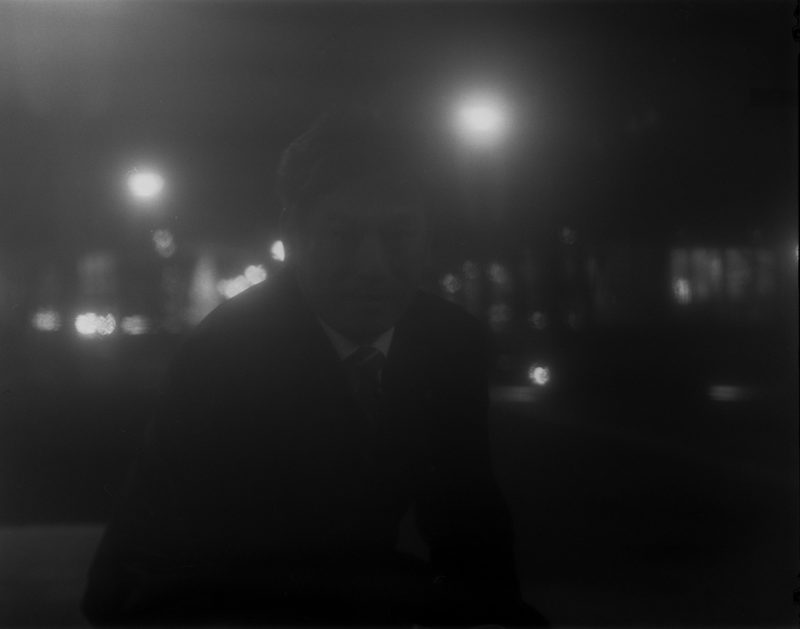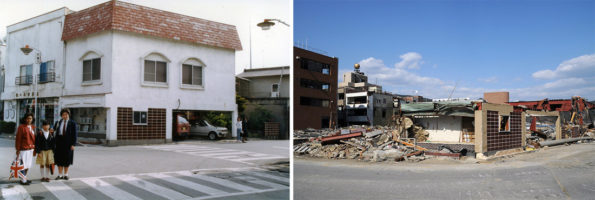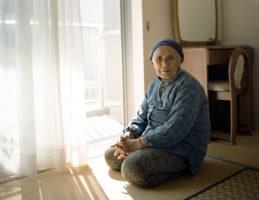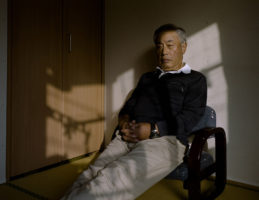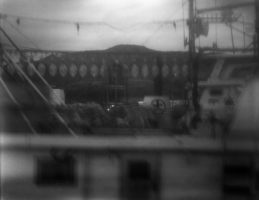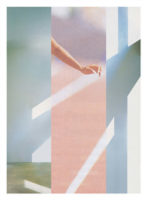
One of the possibly greatest tragedies of the so-called Arab Spring was that in the West, a grand narrative was immediately created around it. The uprisings in various Arab countries were seen not as what they might have been, but as essentially a validation of Western ideology. Make no mistake, there might have been a copious amount of overlap. But at times, it almost felt as if the fighting was not so much about local goals, such as overthrowing a hated ruler (who might have enjoyed the support of the same West for a long time – think Hosni Mubarak), but about Western values.
History wasn’t kind enough to play along. Of all the countries involved, only Tunisia underwent reforms and became a better place. Everywhere else, things didn’t play out so well. Egypt ultimately went back to the same situation it was in before (with its military ruler now again propped up by the West, Arab Spring ideas be damned), Libya might or might not become a failed state (if it hasn’t done so already), Syria lies in ruins, …
Photography was heavily involved in the Arab Spring, as photojournalists descended upon the latest theater of civil war to document the uprisings and locals documented events with their smart phones. Of course, some photographs played a much bigger role than others. Aliaa Elmahdy might now be forgotten (in the West), but her nude self portrait played a much larger for events in Egypt than any of the photographs made by professionals sent there to document what was going on. This observation is not intended to diminish the contribution by all the various photojournalists. But in the world of photography, we often tend to be too narrow in our views. All too often, we inflate our own importance a bit too much.
If you went around the Arab Spring, like Moises Saman did, you now have precious little to show for it in terms of that “bigger picture,” because not much adds up to something. That pre-created narrative, the spring, has evaporated, to leave behind mostly rubble and bleak misery.
If you forget the bigger picture, you’re going to be on to something, though. In that part of the world of photography that I operate in, you make the pictures first and then you think about what you got, what they might tell you. That is, of course, the complete opposite of how large parts of photojournalism operate, where, as I noted above, the pictures often are made to support the story you got sent out for.
Discordia, Saman’s book containing his photographs from the Arab Spring, is billed as “a personal memory of the nearly four years he spent living and working as a photojournalist in the Middle East during the Arab Spring from 2011 to 2014.” Of course, the book is that. But it’s actually — and thankfully — a lot more, and that’s where it gets interesting for its viewers. This is not to say that personal memories somehow aren’t valid or possibly interesting. But in this particular context I feel the story ought to remain with what is being photographed and not who is operating the camera.
The book intermixes photographs taken in many different locations, at different points in time, to ultimately make us face one of the biggest problems we can encounter in life: search as you might, there just isn’t a happy ending, even just a resolution of sorts. The violence and destruction appear to exist for their own sake. And in the midst of all of that are people whose aspirations and dreams aren’t so different than ours. Unlike us, they just happened to be born in the wrong place at the wrong time, witnessing or taking part in or being subjected to the destruction wrought in the name of whatever it might be that drives war.
War means misery, and Saman presents us with plenty of that, without that way out that the simple narratives we cling to demand. The world simply is too complex to accept our longing for simplicity, for that perfect happy ending. And it’s also too complex to allow itself to be described in simple terms with pictures.
Discordia gets at that. There is no resolution. Even pictures we might be tempted to think of as “iconic” won’t reveal much (in reality, iconic pictures only reveal the ideology at play when we term them “iconic”). There is simply the stepping in, at some point in time, and the leaving again later, and the photographic shards picked up along the way speak of chaos.
We’d be better off avoiding the simplistic narratives we tend to come up with to describe the world. The world’s a mess. That’s life. We will be better off accepting that pictures might be able to describe those simplistic narratives well, but that there is little to be gained from doing that, given that the next event then will refuse to adhere to the scheme we’ve set up.
We can (possibly we should) try to make sense of what is happening, but that can’t be done based on what we want. It should be based on what is. Photographs are great to show us what is, and when they’re being put together smartly, as in Discordia, they can show us what we have to face (as an aside, I don’t think the collages add anything to the book — that’s the one thing I could have easily done without).
Photographs can also show us that the veneer of what we call civilization is thin, with ugly realities raging right underneath. The dirty, ugly, violent mess depicted by Moises Saman really is just an uprising – or an election going horribly wrong – away.
Highly recommended.
Discordia; photographs by Moises Saman; collages by Daria Birang; 200 pages; self-published; 2016
Rating: Photography 3.0, Book Concept 4.0, Edit 3.0, Production 4.5 – Overall 3.6
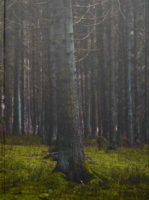
After I had grown old enough to be a curious teenager with a fairly good bullshit meter, I realized that real answers to the questions I had about my country’s past often were hard to come by. I now know that the oft-repeated mantra that “ordinary Germans” had not known about what was done either in their name was complete bullshit. I wish I had a time machine to take Nicholas Stargardt’s The German War and shove it into the faces of all those people who lied to me about their country’s – and, I’m now sure, their own – past.
I have not yet been able to shake the sense of betrayal that built up in me ever since I just could not believe what was both widely accepted and what at the same time obviously could not be the actual truth. In fact, I might end up taking considerable amounts of bitterness about being lied to so widely and freely and shamefully to my own grave.
Regardless, we now know a lot more about the German past, about the involvement of ordinary citizens and soldiers during World War 2 in the many, many atrocities committed. At the same time, over the past twenty five years the consequences of the war for the Germans has also received considerable attention. I already wrote elsewhere that engaging in an arithmetic of death or suffering has long ceased to make sense. It doesn’t make sense on the level of the individual (taking all air out of debates about the death penalty), and it doesn’t make sense on the level of hundreds, thousands, millions.
I suppose if part of the being lied to three decades ago hadn’t often included focusing so much on German suffering I’d have a slightly easier time accepting it than I actually do. But I’m working on acceptance.
Claudia Heinermann‘s Wolfskinder focuses on part of the consequences of World War 2 that at least in Germany had never really left the public debates. As Soviet troops swept across Eastern Europe to at least initially liberate countries occupied by the Nazi Germany, ethnic Germans started a trek towards the West, which ultimately resulted in vast parts of Eastern or Central Europe being freed of Germans (reversing centuries of tradition etc.). Where Germans were not expelled by newly liberated states, they left on their own, leaving behind what had been their homes. In the chaos, families were separated, and many young children ended up being on their own, trying to get by.
This, of course, is a situation that is only too familiar from stories now emerging about refugees escaping to Europe today. Just the other day, I read about a ten-year old Afghan child being reunited with the rest of his family. Plus ça change, it’s depressing. Anyway, those German children ended up being termed Wolfskinder, wolf children, given often they ended up living in the woods, much like feral animals. Many of them eventually found a home, often enough not their original home, but a home, and a home certainly was better than none.
Wolfskinder tells the stories of a number of them. The book combines photographs by Claudia Heinermann with text by Sonya Winterberg. That text is integral to how the book operates, given that each previous wolf child is given the opportunity to talk about her or his particular story. Heinermann provided the visual background in the form of portraits, environmental photographs, plenty of pictures of the woods, and there are reproduction of archival materials, whether photographs, letters, documents, or whatever else. So the book neatly follows the contemporary path of documentary photography, giving ample insight into the lives of a fairly large number of people.
It’s a hefty book, not just in terms of what it throws at the viewer/reader. It also literally is a heavy, and big, with 404 pages. I can’t help but feel Wolfskinder could have been more condensed, without losing any of its punch. What it might have lost, and I’m guessing this is what stood in the way of doing that, was giving each and every previous wolf child exactly the same amount of attention. But still, given the overall structure is one of chapters, each done in exactly the same way, roughly halfway through the book there is very little discovery left for the viewer/reader. Everything is spelled out and presented, even though ultimately much can only be imagined. I feel this ultimately takes away some of the impetus the book could have had.
Wolfskinder; photographs by Claudia Heinermann; text by Sonya Winterberg; 404 pages; self-published; 2015
Rating: Photography 3.0, Book Concept 2, Edit 3, Production 4.0 – Overall 3.0


